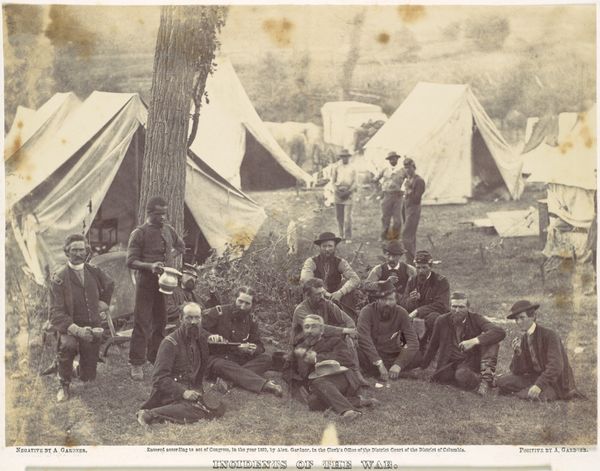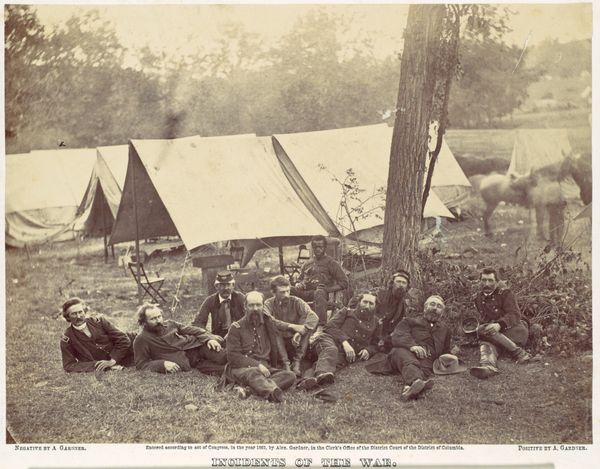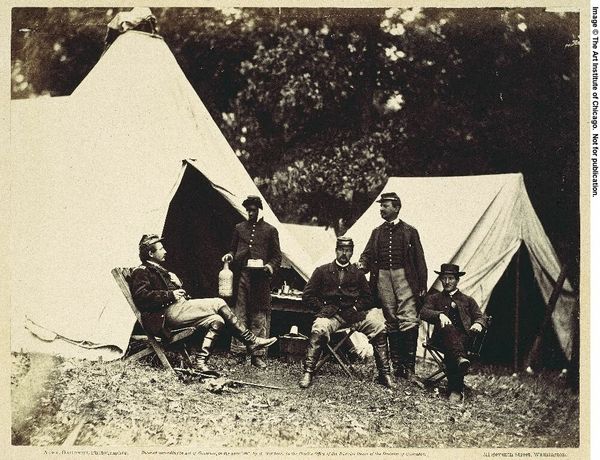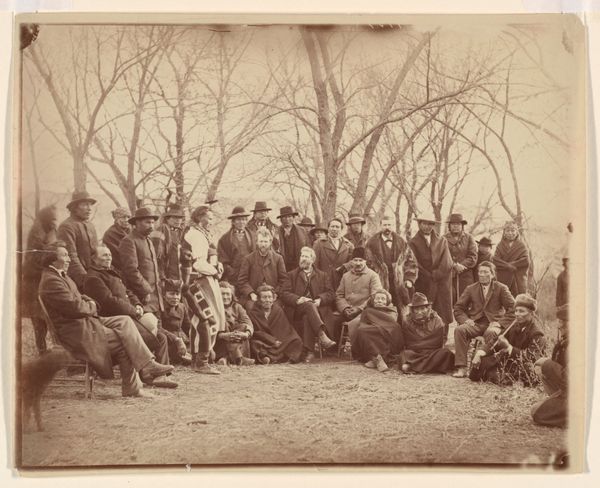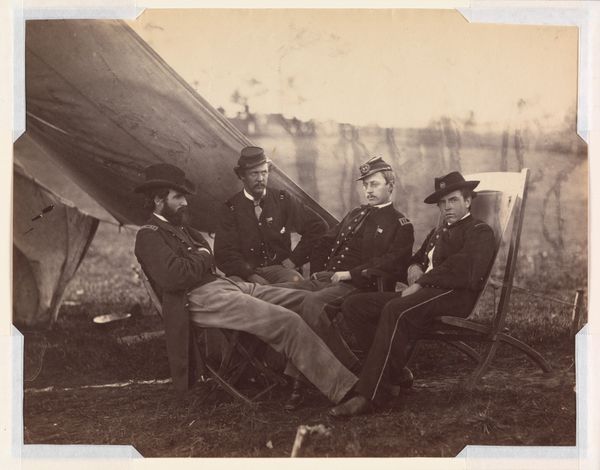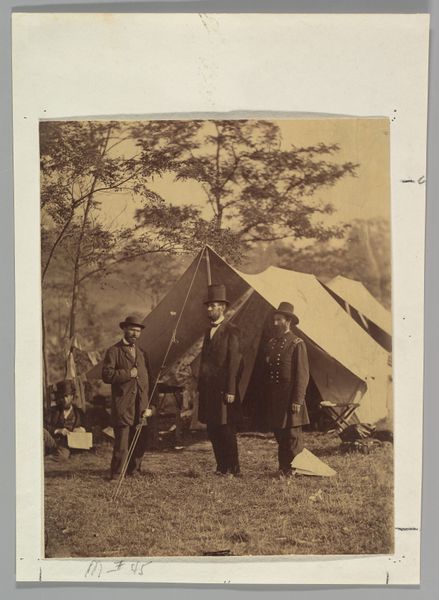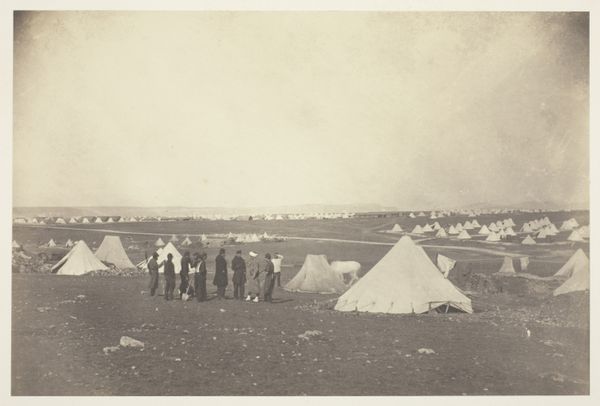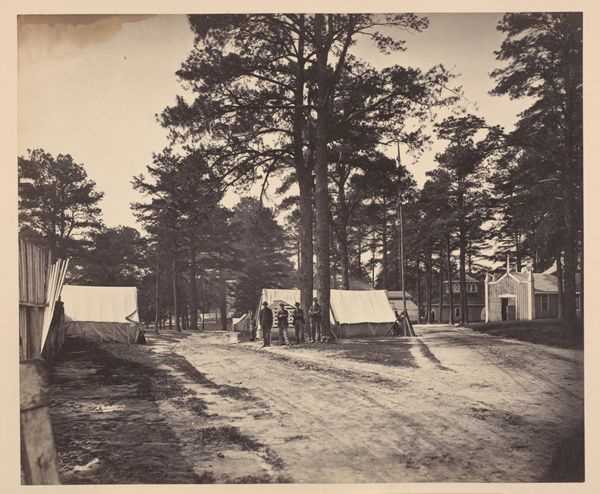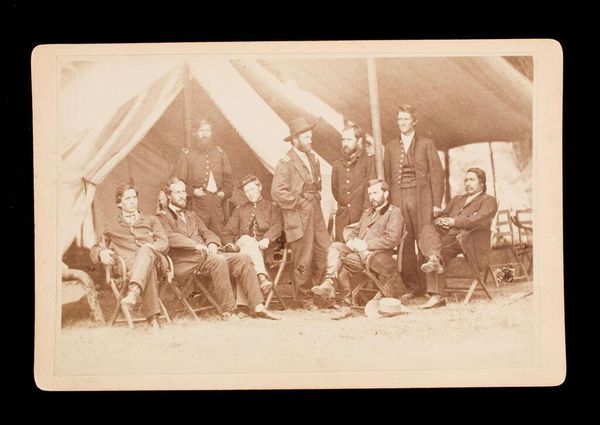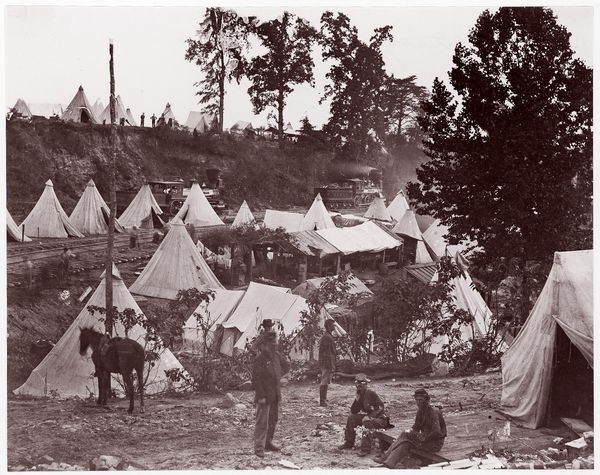
print, photography, gelatin-silver-print
#
portrait
#
16_19th-century
# print
#
war
#
archive photography
#
photography
#
historical photography
#
group-portraits
#
gelatin-silver-print
#
19th century
#
men
#
united-states
#
realism
Dimensions: 17.7 × 22.9 cm
Copyright: Public Domain
Curator: Alexander Gardner’s “Scouts and Guides to the Army of the Potomac,” a gelatin silver print made in 1862, strikes me immediately with its composition. There’s something incredibly staged and rigid about the arrangement. Editor: Indeed. It's fascinating to consider this work within the context of the American Civil War. This image doesn't just portray men; it constructs a narrative around identity and power amidst a deeply fractured nation. The presence of these "scouts and guides" implies a certain kind of insider knowledge, a reliance on expertise within the brutal realities of war. Curator: Absolutely. Visually, the monochromatic tones give a stark formality, and the pyramidal arrangement of figures with the tent in the background is classic, yet somehow it lacks spontaneity. There's a careful balance created by the photographer with the subjects’ poses. Editor: That's where I see the intersectional narrative emerging. These are not just soldiers; they represent different facets of the social dynamics inherent in the Union Army. Who were these men? What role did they truly play? And what does it say about the societal structure of the time that some were elevated while others remained invisible? Curator: That said, consider the way the light plays across their faces, especially that of the officer standing at the right with his hand placed at his waist—how that single element provides contrast. Then note that the eye moves upwards towards that sharply-illuminated tent behind them, creating almost a secondary subject within the portrait itself. Editor: Right. But if we examine the tent critically, isn’t it almost too perfect? Too pristine? It reinforces this idea of the army as a structured hierarchy, masking the lived experience and inequalities of those fighting the war. Are we seeing propaganda carefully disguised? Curator: It’s impossible to truly capture spontaneous ‘truth’ when creating an image like this, certainly. But through technique alone, and the attention to surface detail within this piece, we catch glimmers. Editor: Precisely, and that careful construction reminds us that history itself is also a construction. Looking at Gardner's photograph then, isn’t only an aesthetic encounter—it’s a profound encounter with historical forces shaping individual lives and societal structures. Curator: I suppose you're right. Looking at it again, there are nuances, subtle shades within those seemingly rigid shapes that provoke contemplation beyond simple observation. Editor: Yes, and I think that’s the enduring power of artwork like this. It invites continuous re-evaluation, prompting dialogue between past realities and contemporary concerns.
Comments
No comments
Be the first to comment and join the conversation on the ultimate creative platform.
